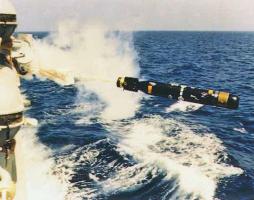In 1976 the Lucas Aerospace Company was faced with the
prospect of making up to 20% of its 18,000 workers redundant. Lucas was a big
conglomerate that had just come into existence, partly with the support of the
1974-79 Labour government’s industrial policy. They wanted to create ‘national
champions’ and thought ‘big is beautiful.’ Not if you’re going to lose your job
as a result, it isn’t!
Most of Lucas’ products were arms for sale in the military
market. The Combine Shop Stewards’ Committee responded by proclaiming “the
right to work on socially useful products.” Consulting with the workers, they produced
a Plan for useful alternative work in the Lucas factories. The Plan shows the
initiative and involvement of working class people when they see an opportunity
to do something useful – and save their jobs at the same time.
The fact that the feasible Plan never came to fruition shows
also the wilful sabotage of the capitalist class when workers show that they
can do better than management. The fact is that fleeting moments of workers’
initiative and workers’ control within capitalism can only be consolidated and
made permanent when the means of production pass into public ownership and the
workers’ can control production at a plant level and manage the socialised
economy collectively.
The direct quotes in this article are from a book by Mike
Cooley, Architect or Bee? The human price of technology, Hogarth Press,
1987. Mike was a founder of the Lucas Aerospace CSSC. Lucas dismissed him in
1981.
“Before we even started the Corporate Plan, our members at
Wolverhampton plant visited a centre for children with spina bifida and were
horrified to see that the only way the children could propel themselves about
was by crawling on the floor, so they designed a vehicle which subsequently
known a hobcart. It was highly successful, and the Spina Bifida Association of
Australia wanted to order 2,000. Lucas would not agree to manufacture it
because, they said, it was incompatible with their product range.”
“Mike Parry Evans, its designer, said that it was one of the
most enriching experiences of his life when he delivered the hobcart to a child
and saw the pleasure on the child’s face. It meant more to him, he said, than
all the design activity he had been involved in up till then. For the first
time in his career he saw the person who was going to benefit from the product
he had designed, and he was intimately in contact with a social human problem.
He needed to make a clay mould of the child’s back so that the seat would
support it properly. He was working in a multi-disciplinary team together with
a medical doctor, a physiotherapist and a health visitor. This illustrates very
graphically that aerospace technologists are not only interests in complex,
esoteric technical problems. It can be far more enriching for them if they are
allowed to relate their technology to really human and social problems.”
The Lucas Aerospace Combine Shop Stewards’ Committee then
asked their members for technically viable means of using the existing
equipment and human expertise to beat swords into ploughshares, to make
socially useful products instead of weapons. Soon they had150 ideas. Eventually
they collected the proposals into 6 volumes, each of about 200 pages. They came
up with:
A life support system. The workers found that 30%
of people with heart attacks die before they arrive at intensive care. They
designed a portable life-support system for use in an ambulance or beside a
stretcher.
Aware of the environmental effect of burning
carbon fuels, they invented a hybrid battery-driven car with a small
supplementary internal combustion engine. This was to overcome the problems
posed by carrying round and recharging batteries in an entirely electrically
powered car.
A wide range of alternative energy technologies
such as wind turbines and universal power packs able to be turned to any number
of uses in poor countries.
A road/rail vehicle which had successful tests
on the East Kent railway line.
They
also realized that not nearly enough dialysis or kidney machines were being
produced. As a result, “3,000 people die each year because they cannot get a
machine. In the Birmingham
area, if you are under fifteen or over forty-five you are allowed, as a medical
practitioner put it so nicely, ‘to go into decline.’ The doctors sit like
judges and juries with the governors of hospitals deciding who will be saved.
One doctor told us how distressed he was by this situation and admitted that he
sometimes did not tell the families of the patients that this was happening as
it would be too upsetting for them.”
Was
Ernie Scarbrow, secretary of the Combine Committee, wrong when he denounced the
situation produced by capitalist priorities? “It is outrageous that our members
in Lucas Aerospace are being made redundant when the state has to find them £40
a week to do nothing except suffer the degradation of the dole queue. In fact
the £40 a week amounts to about £70 a week when the cost of administration is
taken into account. Our workers should be given this money and allowed to
produce socially useful products such as the kidney machine.”
[A
pound could buy six times as much in 1976 as it does now. On the other hand earnings
related unemployment benefit has been abolished and the level of benefits severely
mauled by Thatcher’s war on the unemployed in the 1980s and never restored to
their former levels.]
But
management was not interested. “When (the workers) proposed the manufacture of
heat pumps using natural gas in internal combustion engines, the company turned
the proposal down, saying that it would not be profitable, and was incompatible
with their product range. Burnley workers
subsequently revealed that the company had had a report prepared for them by
American consultants showing that the market for the heat pump would have been
some £1,000 million in the EEC countries by the later 1980s. Lucas would be
willing to forego a market of that kind to demonstrate that it, and it alone,
would decide what was made, how it was made and in whose interests it was made.
Lucas workers then quickly recognized that they were dealing not just with an
economic system but with a political system concerned with the retention of
power.”
What
went wrong? With the technology, nothing. The
Financial Times, Engineer and Guardian all praised the projects. The
CSSC even got an invitation to a US Senate Committee. The enthusiasm of the
workers was eventually worn down by the evasions of the trade union leadership
and the tendency of the Labour government (on a knife-edge majority in
Parliament) to kick the whole thing into the long grass. Their struggle was
basically a defensive one against redundancy, and the workers had some success.
The
problem was capitalism. Lucas management were being made to look stupid by
their own workforce, and they knew it. They did not want to unleash the
creativity and energy of their workers even if the alternative was collapse.
Eventually Lucas was taken over and came under American ownership.
But who
would buy the brilliant products the workers had designed? Under capitalism
there is always plenty of money for arms but too little to spend on children
with spina bifida or patients who need kidney dialysis.
On the front
page of the Plan was written “there cannot be islands of social responsibility
in a sea of depravity.” So let’s build a society of social responsibility, a
society where we do our very best for children with spina bifida and patients
who need kidney machines and all the other good causes, and where our best is very
good. It’s called socialism. We could even let the arms manufacturers have flag
days, standing outside Woolworths with a collecting tin, to see if anyone
wanted to pay for their toys. We don’t think there would be any takers.






